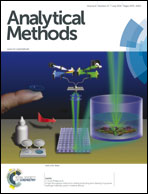Ozone dosage effect on C6 cell growth, in vitro and in vivo tests: double bond index for characterization
Abstract
Due to its chemical properties, ozone gas has been used in the medical field for the treatment of many diseases. In general, all therapies based on ozone reported regulatory clinical effects. However, ozone dosage has not been clearly defined and connected with the specific stage of the illness evolution. The double bond index has been used to identify or characterize the effects of specific therapies on patients. The aim of this article was explore the possibility of using the DB index as a simple and fast biochemical test to characterize the effects of ozone therapy for cancer. In this study, this claim was confirmed with an in vitro and in vivo test. The proliferation analysis of C6 rat glioma cells was correlated with the DB-index variation. The in vivo test used athymic mice with inducted tumors of the same cell line (C6). The tumor's volume and its activity, the cholesterol/triglyceride variations and the hydroperoxide quantification were correlated with the DB index variations in plasma, erythrocytes and tissues. In all cases, there was a specific and plausible relationship between the DB index behavior in the clinical and imaging results obtained by micro PET studies.


 Please wait while we load your content...
Please wait while we load your content...